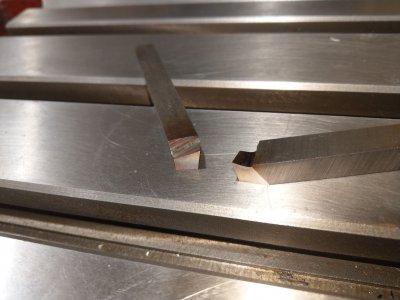- Joined
- Jul 28, 2017
- Messages
- 2,555
Install the disk part in your vise so the long dimension is UP. Mill a slot across the narrow dimension where you need it. Now you have three flat sides for your cutter. Yep, the cutter isn't in a square hole. I don't think that matters, given the direction of cutting forces. Think of it as being similar to how cutting tools are installed in a lathe QCTP. The holders don't have square holes in them for the cutter, either, just a slot.
If that bothers you, you could make a deeper slot and back the cutter with a same-sized key. Both will be held in place with set screws, of course, so there'd be some additional machining involved. Not that getting yourself a square hole is the end of the machining you would have to do anyway....
If that bothers you, you could make a deeper slot and back the cutter with a same-sized key. Both will be held in place with set screws, of course, so there'd be some additional machining involved. Not that getting yourself a square hole is the end of the machining you would have to do anyway....







